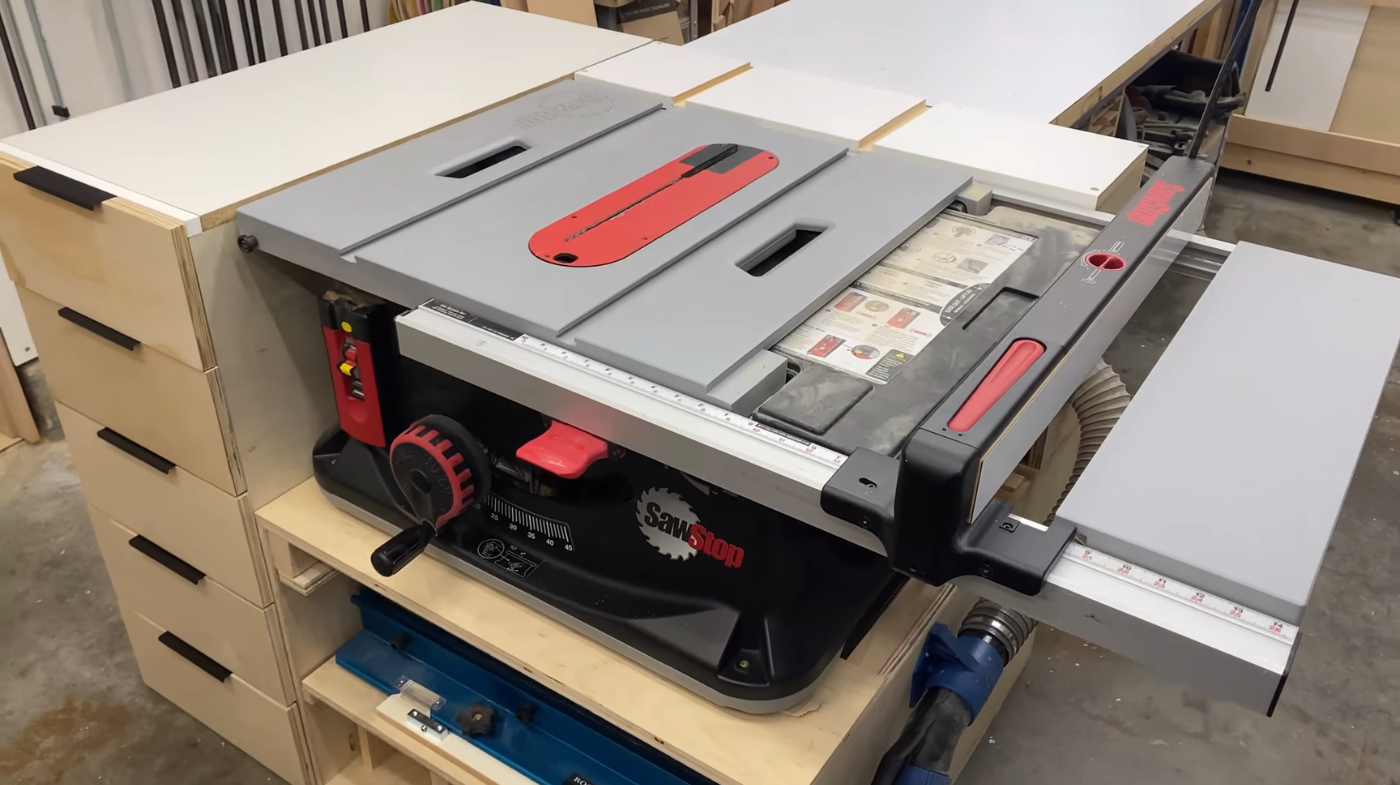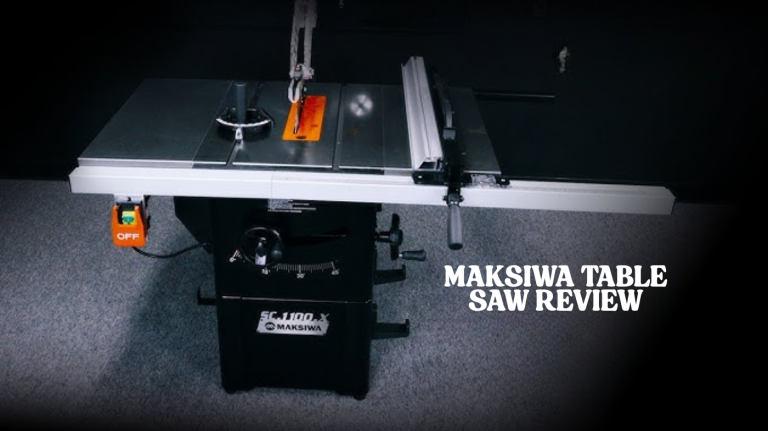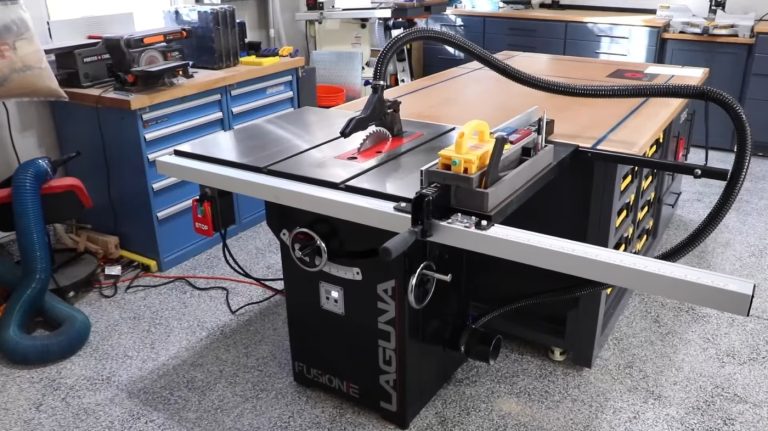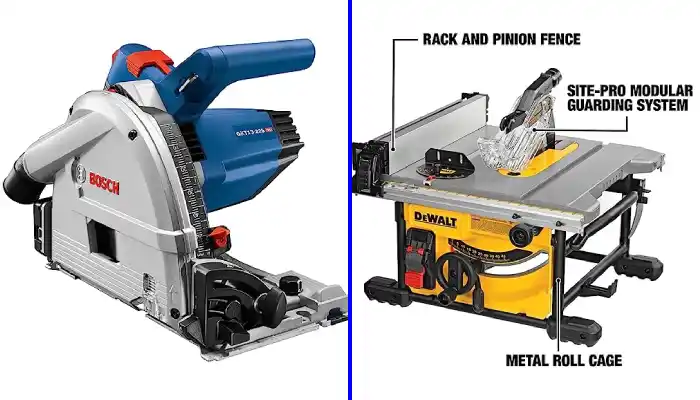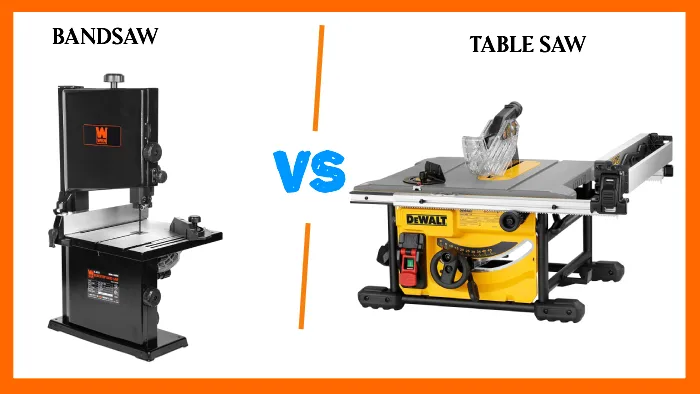Table Saw Storage Ideas: Maximize Space with Smart Racks
You can maximize your workshop space by using custom cabinets with built-in pegboards, slide-out panels, and vertical storage for blades and accessories.
Incorporate durable materials like 3/4″ plywood and web frames for strong, stable construction. Mobile carts with locking wheels improve accessibility, while enclosed blade storage boosts safety by reducing contact risks.
Organizing tools under the saw or on wall racks keeps your workspace efficient and clutter-free. Keep exploring to optimize your setup with practical assembly tips and safety features.
- Stand Up to Any Challenge: Get ready for added security during all your difficult projects! The tool…
- Three-Gear Height Fulfill Your Desires: Three-height gears are set in place for you to choose from!…
- 4 Stable Casters: Roll over any obstacle! Our portable planer stand features four swivel casters and…
Key Takeaways
- Use wall-mounted pegboards or French cleat racks to organize blades and accessories for easy access and protection.
- Build custom cabinets with inserts and metal pegboards for durable, tailored storage accommodating specific saw models.
- Implement vertical slide-out pegboard panels or compact cabinets under the saw to maximize workshop space efficiently.
- Employ drawer slides, pocket hole joinery, and spacer blocks for sturdy assembly of multi-drawer storage units.
- Enhance safety with mobile carts, locked compartments, clear labeling, enclosed blade guards, and dust containment strategies.
Blade and Accessory Storage Solutions
When organizing your table saw blades and accessories, efficient storage solutions not only protect your tools but also streamline your workflow.
Use wall racks or pegboard panels to keep blades secure and easily accessible, preventing damage or loss. French cleat blade storage racks are a popular DIY solution that can be mounted above the table saw for convenient blade organization.
- No more fussing with blades stacked directly on top of one another. With the Fulton Saw Blade…
- Neatly and safely store up eight table saw or circular saw blades with no hassle
- Saw Blade Storage Rack will comfortably hold blades from 7-1/4″ to 12″ in diameter safely
Pull-out trays and compact cabinets maximize space, especially in tight workshops. Adjustable slots accommodate various blade sizes, enhancing versatility. Before storing, it is important to disconnect motor to ensure safety and ease of access.
For accessories, pegboard hooks and drawer organizers help keep push sticks, clamps, and small components orderly. Shelving units provide space for manuals and safety gear, while magnetic strips hold metal items like screws for quick retrieval.
Portable caddy systems improve accessibility for frequently used accessories. Prioritize protective cases for blades and label storage spots clearly to speed up identification.
- Big Horn 19175 8 Inch Table Saw Blade Holder
Custom Cabinets for Table Saw Organization
Although off-the-shelf storage options can suffice, custom cabinets offer unmatched adaptability and efficiency for organizing your table saw accessories.
You can tailor these cabinets to fit your specific saw model and workspace, maximizing under-saw space with drawers, shelves, and pegboards.
Many designs include a metal pegboard on the sides compatible with standard hooks and magnetic accessories, adding versatile storage options. Incorporate custom inserts for blades, dado stacks, or featherboards, and add magnetic strips for extra tool storage.
Materials range from wood to metal, allowing you to balance durability and aesthetics. Regular maintenance routines help ensure that your stored tools and blades remain in optimal condition.
Multi-drawer systems and adjustable heights enhance functionality, keeping everything within reach and improving workflow.
Vertical and Space-Saving Storage Ideas
You can maximize your workshop’s efficiency by installing slide-out pegboard panels that keep tools accessible yet tucked away. This approach mirrors the pull-out vertical tool tray featured in a custom storage unit designed specifically to fit under a table saw wing, enhancing both convenience and space utilization.
Compact vertical cabinets provide dense storage without consuming valuable floor space. Together, these solutions streamline organization while saving room around your table saw.
Slide-Out Pegboard Panels
Because space is often limited in workshops, slide-out pegboard panels offer a practical solution by storing tools vertically and reducing floor clutter. You gain easy access to your tools as the pegboard smoothly slides out, thanks to drawer slides and spacer rails.
The design utilizes quarter-inch pegboard cut into customizable rectangles, allowing you to tailor the size to your available space and storage needs.
Customizable hooks and bins let you tailor the layout to your needs, while integration into cabinets keeps your workspace tidy and safe. This method also helps in maximizing space efficiency while keeping tools accessible and organized.
| Feature | Benefit |
|---|---|
| Drawer Slides | Smooth, durable sliding action |
| Spacer Rails | Proper clearance for movement |
| Custom Hooks | Flexible tool organization |
| Cabinet Integration | Neat, hidden storage |
| Durable Materials | Long-lasting, reliable use |
Installing involves pre-drilling, mounting rails, securing the pegboard, and testing the slide for preferred performance.
Compact Vertical Cabinets
How can you maximize storage without sacrificing floor space in your workshop? Compact vertical cabinets offer a practical solution by fitting neatly under your table saw with dimensions around 30 1/2″ H x 21 3/4″ D x 26″ W. These cabinets also help protect your blades from damage, extending their life through proper storage and maintenance of circular saw blades.
Built from durable 3/4″ plywood, these cabinets include multiple drawers and designated slots for blades and featherboards, ensuring organized, secure storage.
These storage solutions are designed to optimize shop space with under-table storage that eliminates clutter on your table saw fence. Adjustable features allow customization to fit various table saw models.
You can add casters for mobility or use levelers for height adjustments. Construction requires tools like a table saw, drill, and miter saw, and pocket hole joinery ensures sturdy assembly.
Enhancing Mobility and Accessibility
You’ll want a mobile cart design that balances stability with easy movement, featuring locking wheels to secure your table saw during use. Position accessible drawers within arm’s reach to keep blades and accessories organized without interrupting your workflow.
This setup guarantees both mobility and quick access, optimizing your workspace efficiency. Utilizing under-the-wing space of the table saw for storage can maximize shop layout efficiency while keeping tools readily available. Regularly tightening all bolts on your storage cart ensures stability and safety during movement.
Mobile Cart Design
A well-designed mobile cart enhances your table saw’s mobility and accessibility, making it easier to maneuver and organize your workspace efficiently.
Equip your cart with heavy-duty casters to guarantee smooth movement across various floor types. Incorporating ergonomic design principles can reduce fatigue during prolonged use, similar to the benefits seen in rear handle tools.
Opt for a compact, modular design that supports quick assembly and disassembly, perfect for small workshops or transport needs. Incorporate multiple storage compartments—drawers and open spaces—to keep tools organized and accessible. The design can include 2 drawers and 3 open compartments to maximize storage options.
Semi-enclosed structures help contain dust, simplifying cleanup and maintaining a cleaner workspace. Foldable wings or outfeed tables can expand your cutting surface when needed and fold away to save space.
Ensure the cart’s height is ergonomic to reduce strain during use, and include secure locking mechanisms for safety. Durable materials and customizable components make your cart versatile and long-lasting.
Accessible Drawer Placement
Building on the mobile cart design, placing drawers thoughtfully boosts your table saw’s accessibility and mobility. Space drawers about ¾” apart using plywood spacers to guarantee smooth slide operation and durability.
These drawers often incorporate side mount slides for cost-effective and functional operation. Considering the weight and mobility of your table saw ensures the storage additions do not hinder movement.
Measure cabinet height carefully to fit under the extension wing without interference. Use multiple drawers of varying depths to store tools and accessories efficiently, placing frequently used items within easy reach to enhance workflow.
Incorporate adjustable shelves and compartments for flexible storage of jigs and blades. Opt for full-extension slides to maximize drawer accessibility, especially in tight spaces.
Design the cabinet flush with the table saw to maintain working space and reduce strain. Organize tools by type with custom inserts or original cases to minimize clutter and speed up retrieval, keeping your workspace efficient and mobile.
Safety Features for Organized Workshops
When you organize your workshop effectively, you substantially reduce hazards like trips, slips, and falls caused by clutter. Keep your table saw and tools in designated, locked storage to prevent unauthorized use and accidental startups.
Use clear visual labels and floor markings to identify hazardous zones and emphasize PPE use. Enclosed storage units with blade guards minimize contact injuries, while soft-close doors reduce pinching risks.
Arrange storage to keep walkways clear, improving emergency access and visibility of safety equipment. Proper storage also facilitates dust management by containing debris and wood chips, which enhances visibility and reduces slip hazards.
This is critical because falls, slips, and trips cause 39.2% of incidents in industries with high risk. Integrate storage organization into safety training, reinforcing proper tool handling and retrieval.
This structured approach guarantees quick access while maintaining compliance with safety regulations, ultimately creating a safer, more efficient workspace free from common accident causes.
- Multi-Functional Equipment Protection: Our Table Saw Cover is not only designed for table saws but…
- Dustproof and Waterproof: Crafted from thick waterproof Oxford cloth, this Table Saw Cover reliably…
- Multiple Size Options for Perfect Coverage of Various Devices: Our equipment cover offers multiple…
Materials and Construction Tips for Storage Units
Although selecting the right materials is essential, how you assemble your table saw storage unit determines its durability and functionality.
Use 3/4″ plywood for strength and melamine for smooth drawer fronts. Reinforce with web frames to maintain rigidity and ease drawer alignment. Employ tongue and groove joints in the lower frame to ensure stability.
Pre-drill holes to avoid wood damage and use clamps with glue for strong, precise bonds. Edge banding with hardwood like walnut protects and enhances appearance; route it carefully using a sacrificial fence.
Design adjustable shelves with shelf pins for flexible storage. Level and square the cabinet during assembly to maintain stability. During assembly, use spacer blocks to position dividers accurately, ensuring consistent spacing and strength in the case spacer blocks.
Finally, secure the unit to the saw or floor to prevent movement, optimizing safety and accessibility in your workshop.
Frequently Asked Questions
How Do I Prevent Rust on Stored Table Saw Blades?
To prevent rust on stored table saw blades, you should clean blades thoroughly and apply protective coatings like wax-based products or specialized rust inhibitors.
Store blades in a dry, climate-controlled area, using dehumidifiers or silica gel packs to reduce moisture. Incorporate vapor corrosion inhibitor (VCI) papers or cases for added protection.
Regularly inspect and reapply coatings as needed, addressing any early rust spots promptly to maintain blade integrity.
What Is the Best Way to Label Drawers for Quick Tool Identification?
Imagine reaching for the perfect tool in seconds, not minutes. To label drawers for quick identification, use clear, durable adhesive or magnetic labels with bold text and icons.
Organize by category and standardize label formats for consistency. Place labels visibly on drawer fronts and regularly update them to reflect changes.
This practical approach reduces search time, keeps your workspace efficient, and guarantees you always grab the right tool effortlessly.
Can I Integrate Dust Collection Into My Storage Cabinet?
Yes, you can integrate dust collection into your storage cabinet. Design it to maximize space, include dedicated ports for hoses, and use flexible connections for easy access and maintenance.
Choose sturdy materials to handle vibrations and plan airflow to prevent dust buildup. Incorporate modular components for adaptability and consider soundproofing to reduce noise. This approach improves efficiency while keeping your workspace organized and clean.
How Often Should I Inspect Safety Devices Stored in the Cabinet?
Think of your safety devices as guardians resting in their fortress; even guardians need regular checks to stay vigilant. You should inspect them before each use, after any modifications, and following storage to guarantee they haven’t been compromised.
Additionally, schedule annual thorough inspections. Always clean and securely store them, then document your checks. This routine keeps your safety system reliable, preventing accidents and ensuring your tools perform flawlessly every time you need them.
Are There Storage Options for Table Saw Accessories in Small Workshops?
You can optimize small workshop storage by using under-table saw cabinets with deep drawers for accessories like feather boards and inserts. Customizable drawers with foam inserts help organize specific tools precisely.
Adding metal pegboards on the sides lets you hang magnetic accessories and hooks. Compact designs ensure the cabinet fits snugly without affecting your workspace, maximizing efficiency and keeping essentials within easy reach.
Smart Table Saw Storage: Save Time, Space and Stress
You might think setting up dedicated storage for your table saw and accessories takes too much time or effort, but well-planned solutions actually save you hours in the long run.
By using custom cabinets, vertical racks, and mobility features, you’ll maximize space, improve safety, and keep everything within easy reach. Investing in durable materials and thoughtful design guarantees your workshop stays organized and efficient, letting you focus more on your projects and less on hunting tools.
Last update on 2025-12-23 / Affiliate links / Images from Amazon Product Advertising API

